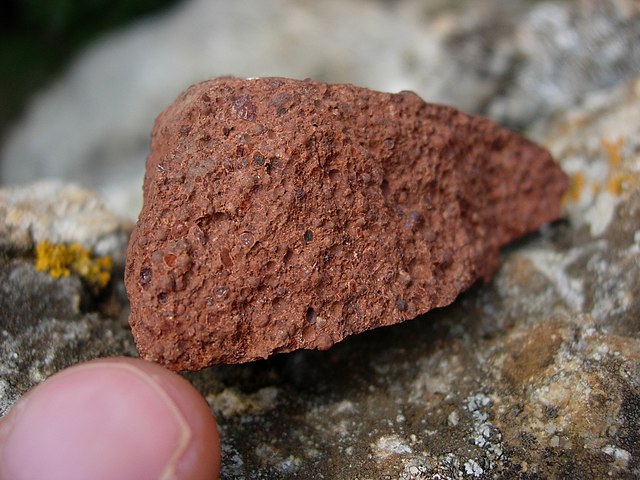Aluminium oxide (or aluminium(III) oxide) is a chemical compound of aluminium and oxygen with the chemical formula Al2O3. It is the most commonly occurring of several aluminium oxides, and specifically identified as aluminium oxide. It is commonly called alumina and may also be called aloxide, aloxite, or alundum in various forms and applications. It occurs naturally in its crystalline polymorphic phase α-Al2O3 as the mineral corundum, varieties of which form the precious gemstones ruby and sapphire. Al2O3 is significant in its use to produce aluminium metal, as an abrasive owing to its hardness, and as a refractory material owing to its high melting point.
Aluminium oxide
Corundum from Brazil, size about 2×3 cm.
Aluminium is a chemical element; it has symbol Al and atomic number 13. Aluminium has a density lower than that of other common metals, about one-third that of steel. It has a great affinity towards oxygen, forming a protective layer of oxide on the surface when exposed to air. Aluminium visually resembles silver, both in its color and in its great ability to reflect light. It is soft, nonmagnetic, and ductile. It has one stable isotope, 27Al, which is highly abundant, making aluminium the twelfth-most common element in the universe. The radioactivity of 26Al, a more unstable isotope, leads to it being used in radiometric dating.
Aluminium
Bauxite, a major aluminium ore. The red-brown color is due to the presence of iron oxide minerals.
Friedrich Wöhler, the chemist who first thoroughly described metallic elemental aluminium
The statue of Anteros in Piccadilly Circus, London, was made in 1893 and is one of the first statues cast in aluminium.






